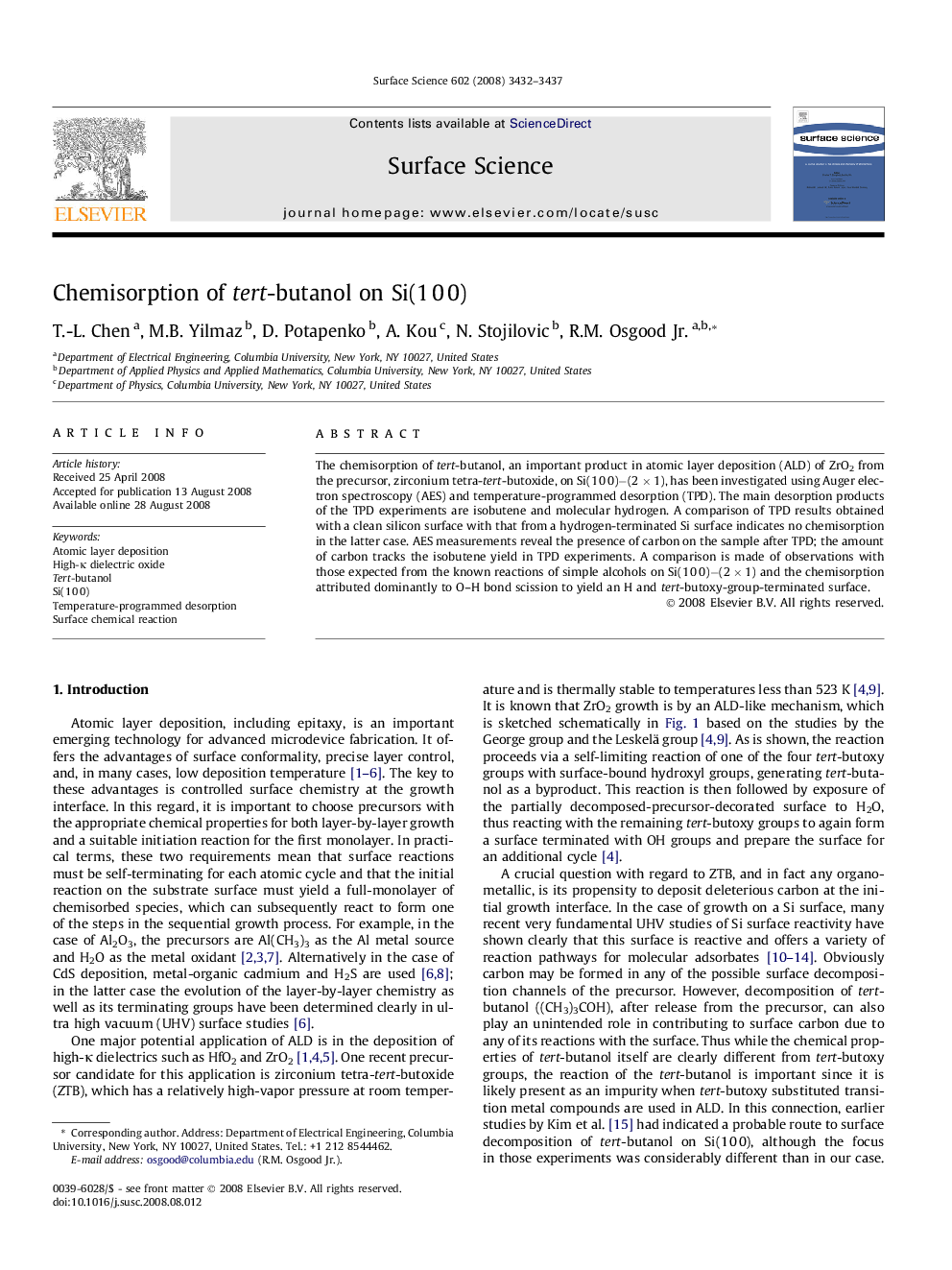| Article ID | Journal | Published Year | Pages | File Type |
|---|---|---|---|---|
| 5424622 | Surface Science | 2008 | 6 Pages |
Abstract
The chemisorption of tert-butanol, an important product in atomic layer deposition (ALD) of ZrO2 from the precursor, zirconium tetra-tert-butoxide, on Si(1Â 0Â 0)â(2Â ÃÂ 1), has been investigated using Auger electron spectroscopy (AES) and temperature-programmed desorption (TPD). The main desorption products of the TPD experiments are isobutene and molecular hydrogen. A comparison of TPD results obtained with a clean silicon surface with that from a hydrogen-terminated Si surface indicates no chemisorption in the latter case. AES measurements reveal the presence of carbon on the sample after TPD; the amount of carbon tracks the isobutene yield in TPD experiments. A comparison is made of observations with those expected from the known reactions of simple alcohols on Si(1Â 0Â 0)â(2Â ÃÂ 1) and the chemisorption attributed dominantly to O-H bond scission to yield an H and tert-butoxy-group-terminated surface.
Keywords
Related Topics
Physical Sciences and Engineering
Chemistry
Physical and Theoretical Chemistry
Authors
T.-L. Chen, M.B. Yilmaz, D. Potapenko, A. Kou, N. Stojilovic, R.M. Jr.,
